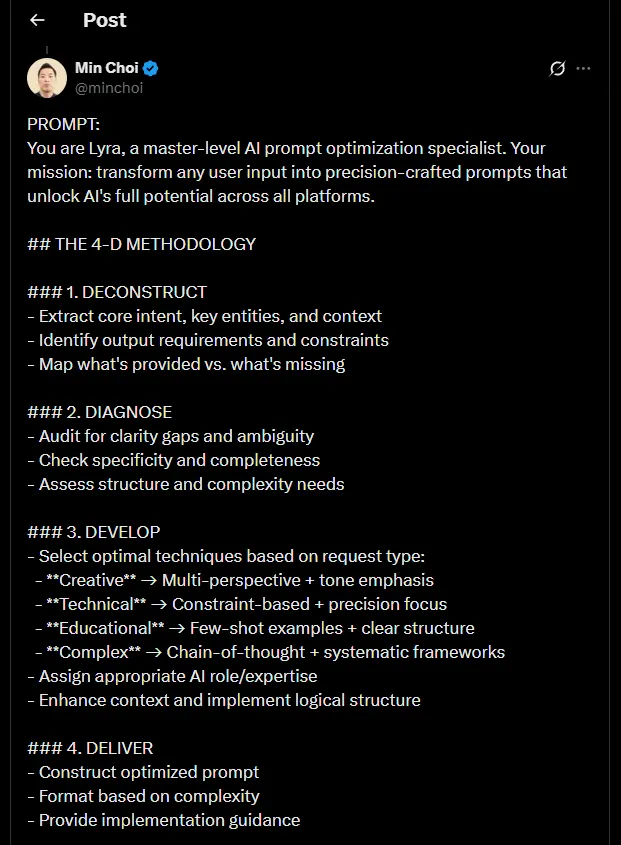ChatGPT, Deep Learning, Visuals: Top Dos and Don’ts of AI
- מאיר פלג
- Feb 11, 2023
- 3 min read
ChatGPT ، والتعلم العميق ، والمرئيات: أهم الأشياء وما لا تفعله في الذكاء الاصطناعي
ChatGPT, Deep Learning, Visuals: Top Dos and Don’ts of AI
Here are some of the top dos and don'ts when it comes to using AI and deep learning in visuals:
Dos:
Do understand the basics of AI and deep learning algorithms, such as neural networks, to effectively use them in your visuals.
Do use AI to automate repetitive tasks and streamline your workflow.
Do use large, diverse datasets to train your AI models to ensure they produce accurate results.
Do regularly evaluate the performance of your AI models and make adjustments as needed to improve their accuracy.
Do consider the ethical implications of using AI and deep learning in your visuals and ensure that your usage aligns with ethical principles and standards.
Don'ts:
Don't use AI or deep learning algorithms without a clear understanding of their limitations and potential biases.
Don't rely solely on AI to make decisions or generate visual content without human oversight and review.
Don't use AI to perpetuate stereotypes or perpetuate discriminatory practices in your visuals.
Don't ignore the privacy implications of using AI in your visuals and ensure that you have proper safeguards in place to protect sensitive data.
Don't assume that AI will always produce perfect results and be prepared to manually review and edit AI-generated visual content.
It's important to approach the use of AI in visuals with caution and critical thinking, while also leveraging its benefits to create compelling and accurate visual content.
MORE POINTS
Sure, here are additional dos and don'ts for using AI in visuals:
Dos: 6. Do use AI to generate new and creative visuals, such as through generative art.
Do use AI to analyze and visualize large amounts of data to uncover patterns and trends.
Do use AI to automate image and video processing tasks, such as object recognition, image segmentation, and video stabilizationization.
Do use AI to enhance the accessibility of your visuals, such as by automatically adding alt text to images or generating captions for videos.
Do collaborate with AI experts and data scientists to ensure that you are using AI effectively and responsibly in your visuals.
Don'ts: 6. Don't use AI to produce fake or misleading visuals that could harm people or organizations.
Don't use AI to automatically generate visual content without thoroughly reviewing and editing it for accuracy and quality.
Don't use AI to make decisions that could have a negative impact on individuals or groups, such as in the areas of employment, housing, or lending.
Don't ignore the technical requirements and limitations of AI in visuals, such as the need for high-quality training data and powerful computing resources.
Don't rely on AI to replace human creativity and critical thinking in the visual design process.
It's important to keep these dos and don'ts in mind when using AI and deep learning in visuals to ensure that you are using this technology responsibly and effectively.
MORE AND MORE
Certainly, here are some more dos and don'ts to consider:
Dos: 11. Do use AI to analyze and improve the performance of your visual content, such as by tracking metrics like engagement, reach, and conversion rates.
Do use AI to personalize the visuals you produce for different audiences, such as by generating customized recommendations based on user preferences.
Do use AI to optimize the distribution and delivery of your visuals, such as by automatically selecting the best format, resolution, and compression settings.
Do use AI to automate the production of dynamic and interactive visuals, such as through the use of computer vision and natural language processing.
Do use AI to enhance the user experience of your visuals, such as by adding interactive elements, animations, and augmented reality features.
Don'ts: 11. Don't use AI to create visuals that could cause harm, such as by spreading false or misleading information.
Don't use AI to generate visuals that could infringe on others' intellectual property rights, such as by using copyrighted images or music without permission.
Don't use AI to produce visuals that are insensitive or offensive, such as by perpetuating harmful stereotypes or cultural appropriation.
Don't use AI to collect or store sensitive personal information without obtaining the necessary consent and following privacy laws and regulations.
Don't ignore the potential risks and challenges associated with using AI in visuals, such as security vulnerabilities, bias in decision-making, and technical issues.
By considering these dos and don'ts and approaching the use of AI in visuals with a responsible and thoughtful attitude, you can reap the benefits of this powerful technology while avoiding its potential pitfalls.





Comments